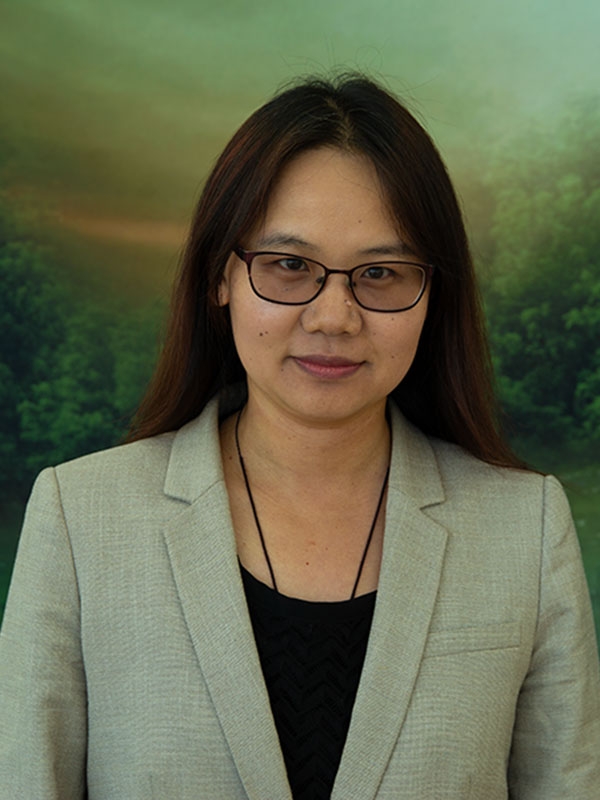NORMAN, OKLA. – The University of Oklahoma will lead a new multi-university Data Assimilation Consortium to improve weather forecasts using enhanced numerical weather prediction systems, recommended as part of President Biden’s Investing in America agenda. Xuguang Wang, Ph.D., Robert Lowry Chair Professor and Presidential Research Professor in the School of Meteorology, will be the director of this new consortium.
The Department of Commerce and National Oceanic and Atmospheric Administration (NOAA) has recommended $6.6 million from the Inflation Reduction Act for the consortium, named the Consortium for Advanced Data Assimilation Research and Education, to be called CADRE. Other universities involved in the consortium include Howard University, Pennsylvania State University, the University of Maryland, Colorado State University, and the University of Utah. Additionally, University of Illinois Urbana-Champaign, State University of New York at Albany and City College of New York will participate as non-funded collaborators.

“CADRE will work collaboratively to perform innovative data assimilation research and development to improve weather forecast from short range to subseasonal to seasonal scales. It will promote transitioning advanced data assimilation research into NOAA weather forecast,” said Wang. “CADRE will also fill serious gaps in the data assimilation workforce through increasing the number of graduate students and postdocs formally trained in data assimilation, and through enhancing the national and international data assimilation workforce pipeline.”
Data assimilation is the science that combines observations with numerical models to obtain an analysis of the status of the earth system as it evolves over time. It is used every day to provide the starting points for weather forecasts. Data assimilation can also be used to understand how a weather or ocean system might change over time, and to keep a weather model on track by constantly correcting the model with new weather observations in retrospective or in real time.
Next-generation data assimilation faces significant challenges associated with high-resolution, multiscale, coupled earth system modeling and a large amount of diverse and complex observations. Serious gaps in the data assimilation workforce and the lack of sustained innovative data assimilation research support inhibit addressing these challenges. CADRE will address these challenges through close collaboration with NOAA and the weather enterprise, such as the Joint Center for Satellite Data Assimilation, the Met Office in the U.K. with its Met Office Academic Partnership, including the University of Reading, and the new Transatlantic Data Science Academy.
Expected outputs from the consortium will be used to improve computer weather forecast predictions using the Unified Forecast System (UFS), a community-based, coupled, comprehensive Earth modeling system. The consortium will also work closely with NOAA’s Earth Prediction Innovation Center to advance new data assimilation science into operations within the UFS.
Extreme weather causes billions of dollars in damage annually, and the risks associated with extreme weather disproportionately affect historically underserved and socially vulnerable communities. Advances in data assimilation will improve numerical weather prediction and will help create better forecasts for extreme weather events such as tornadoes, hurricanes, winter storms, heavy rain, heat waves, wildfires and storm surge.
“Professor Wang’s hallmark at OU is excellence in everything that she does. From teaching, service, and research, she is known internationally by her excellence,” said Berrien Moore, Ph.D., dean of the College of Atmospheric and Geographic Sciences. “This is clearly reflected by NOAA’s choice of CADRE, led by Professor Wang, which also places OU into the leadership spot for data assimilation. I am immensely proud to have Professor Wang as a colleague.”
Wang is the director of the Multi-scale Data Assimilation and Predictability, or MAP, Laboratory at the School of Meteorology, where she leads research to develop new techniques and methodologies for data assimilation and ensemble forecast.
“Our MAP lab develops novel data assimilation algorithms, and assimilates diverse radar, satellite, aircraft, and unmanned vehicle observations to improve the prediction and understanding of weather from local to global scales. In the past 15 years, through collaboration with NOAA, the new data capabilities developed by our MAP lab have been successfully transitioned to multiple US National Weather Service operational forecast systems,” said Wang. “Our MAP lab has also cultivated many students and early career scientists specialized in data assimilation. We will leverage this experience to lead the consortium and work closely with CADRE partners to advance both data assimilation research and workforce development.”
CADRE will be the latest in OU-led national and international collaborations in advancing weather and climate science.
About the project
The Consortium for Advanced Data Assimilation Research and Education is funded by NOAA grant 2007893.
About the University of Oklahoma
Founded in 1890, the University of Oklahoma is a public research university located in Norman, Oklahoma. As the state’s flagship university, OU serves the educational, cultural, economic and health care needs of the state, region and nation. OU was named the state’s highest-ranking university in U.S. News & World Report’s most recent Best Colleges list. For more information about the university, visit ou.edu.
Three University of Oklahoma graduate students have been named winners of the 2025 Three Minute Thesis competition, which challenges participants to explain their research in three minutes to a non-specialist audience.
Sarah Sharif, a researcher with the University of Oklahoma, has been awarded funding from the U.S. Department of Defense (DoD) to create innovative light detectors that pick up mid-wave and long-wave infrared signals at higher temperatures than previously considered achievable.
A team from OU and WVU recently earned a five-year, $3.5 million grant from the National Institutes of Health to study how concept cigarillos influence the potential for addiction. The results will be used to inform the FDA’s impending flavor ban on cigar products and could have wider-reaching implications for other tobacco products that come in flavors, such as e-cigarettes and tobacco-free nicotine pouches.